Panera Bread Saying 'Bye-Bye' to Artificial Ingredients


Panera Bread shared progress on meeting its commitment to remove certain ingredients. The company’s “No No List” is bans more than 150 ingredients, including artificial colors, flavors, sweeteners and preservatives. The artificial ingredients will be removed its U.S. Panera Bread and St. Louis Bread Co. menus by 2016.
Panera is the first national restaurant company in the country to publicly share its list of ingredients slated to be removed. Back in June, the company released its food policy. It did so in order to be held “accountable to long-held values and set the future vision for our menu,” said founder and CEO Ron Shaich in a statement. The No No LIst is the company’s “latest step on our journey to clean food and a transparent menu.”
In a short video, Shaich described the food policy as a “codification of what we’ve been working on for the better part of two decades.”
Why consumers want and need food without artificial ingredients
Back in February, Nestle USA announced its commitment to remove artificial flavors and colors from all of its chocolate, totaling more than 250 products, by the end of this year. Through research, Nestle USA found that U.S. consumers prefer candy brands to be free of artificial flavors and colors. Nielsen’s 2014 Global Health and Wellness Survey showed that 60 percent of respondents said they wanted to purchase food free of artificial colors or flavors.
Studies have linked artificial colors to hyperactivity in children, including a 2012 meta-analysis of studies on artificial colors -- which found that artificial colors affect hyperactive children. A Center for Science in the Public Interest report on artificial colors found they are linked to more than just hyperactivity: Certain colors were linked to tumors and cancer in animals.
Giving consumers what they want is a smart thing for any business. Hopefully, Panera and Nestle will start a new trend where companies re-think the ingredients in their food products, making them healthier.
Image credit: Flickr/Mike Mozart
Bike-Share Programs Extend into Underserved Neighborhoods
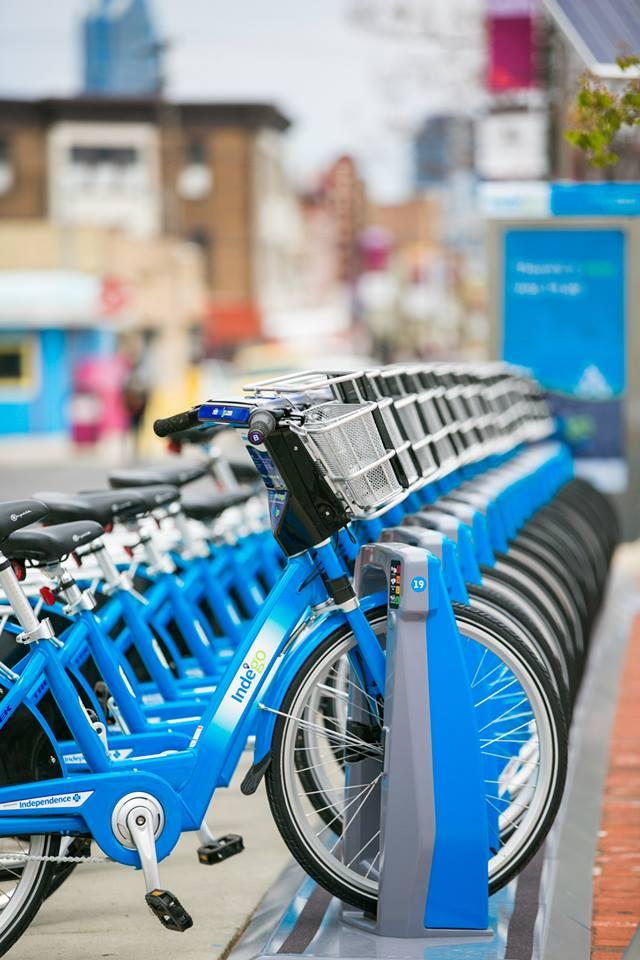

Chicago, New York, Boston and D.C. are just a few of more than 50 U.S. municipalities boasting bike-share programs that help citizens and tourists ride around town. These rent-a-bike models encourage planet-friendly travel, increased utilization of existing public transit options and neighborhood exploration, all the while generating additional revenue for cities.
When it comes to ensuring that the benefits of bike-share programs extend to populations that would otherwise be underserved or priced out of the opportunity, the PeopleForBikes Foundation is strategically aligning its advocacy work with communities and governments to guide both how and where these programs extend into neighborhoods in where they are needed most.
Recently, PeopleForBikes worked with the city of Philadelphia through the Better Bike Share Partnership to launch the city’s first bike-share program, Indego. Through the partnership, the City of Brotherly Love was administered funds to implement 20 dock stations in underserved communities. PeopleforBikes plans to carry out similar projects by administering $900,000 in grant funding over three years to bike share operators, cities and local nonprofits to help U.S. cities implement strategies to increase bike-share use in underserved communities.
“The benefits of a bike-share program are numerous,” said Martha Roskowski, PeopleForBikes vice president of local innovation. “It can inexpensively bridge the 'last mile gap' between a commuter’s public transit and their final destination. It also provides visitors an exciting new way to explore a city, gets people who might not otherwise ride onto [a] bicycle and is environmentally friendly. Now our work is to make sure the benefits of bike sharing are available to everyone in the city.”
Biking and transportation disproportionality
Disproportionately, some of the most recognized bike-share programs in the country have been met with controversy for lack of equitable distribution in core neighborhoods characterized by less affluence.
In predominately lower-income black and Latino communities, transportation expenditures or lack of access could spell a variety of challenges, including: impact of inadequate transportation options that prevent people from getting to work on time or being able to get to a job interview a considerable distance away; unreliable transportation that increases school tardiness; and inaccessible bus or train routes that prevent effective access to healthy grocery stores.
In other words: Communities with statistically recognized transportation issues benefit the most from having a bike-share option in their neighborhood.
This issue is examined in a recently released bike equity report by PeopleForBikes and the Alliance for Biking & Walking. The research conducted revealed several key insights:
- The lowest-income households bike the most
- The lower the income, the less you drive
- Hispanic people bike for recreation the most
- People of color bike for transportation most
- People of color care more about protected bike lanes
According to The Leadership Conference on Civil and Human Rights, access to affordable and reliable transportation widens opportunity and is essential to addressing poverty, unemployment, and other equal opportunity goals such as access to good schools and health care services.
Models of equity across cities
“In the past 10 years bike sharing has gone from a kooky idea to a new reality to an essential part of the transportation network in many cities,” Kate Fillin-Yeh, the bike-share program director at the National Association of City Transportation Officials, said in a press release. “As cities look to balance their transportation priorities and budgets, there has been an increasing demand for information on how to get the most out of bike share systems and how to make bike share benefit the most people.”
Innovation is a standing value that many cities have continued to examine as they iterate on the quality and equity of their bike-share programs. Increasing opportunity for all citizens is a next step in configuring models that benefit diverse communities.
For instance, CitiBike in New York City, which launched in 2013, recently extended their program to include bike stations that will serve public housing communities. A discount annual membership rate of $60 per year is available for lower-income residents, compared to the standard annual rate of $149.
Last spring, Boston’s Hubway program partnered with Boston Medical Center to offer lower-income riders at risk for obesity-related health issues a $5 membership with a doctor’s prescription.
Silver bullet vs. one side of the equation
Certainly, one can argue that increasing access to bike-share programs and pushing planners to increase protected bike lanes to encourage bicycling as a transportation option are viable solutions in removing barriers for lower-income residents to have access to adequate transportation options.
However, analyzing the data and metrics of usage in these neighborhoods over a period of time will be key to understanding how, why and when individuals ride and use the systems provided. Subsequently, this data collection can serve as a basis for deeper insight on how to produce rider curriculum, encourage safe riding behaviors, and assess how these programs are increasing quality of life and revitalization in communities in which programming seeks to be of service.
Image via Indego on Facebook
How Good is That Environmental Nonprofit, Anyway?
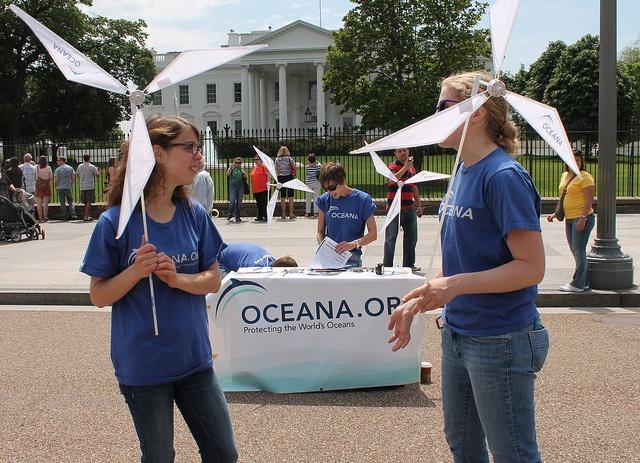

Editor's Note: This post was originally published on Ensia.
By Marc Gunther
Greenpeace rates tech companies on their data centers. Oxfam America ranks food brands on the sustainability of their supply chains. The League of Conservation Voters scores elected officials on their voting records.
But who rates, ranks and scores Greenpeace, Oxfam America and the League of Conservation Voters? Or The Nature Conservancy, Conservation International or WWF? For now, no one. No independent organization has made a serious effort to evaluate the performance of environmental organizations. Nor, for that matter, do many environmental nonprofits report publicly on their effectiveness or admit their errors. Put simply, many green groups lack the accountability they demand from business and government.
That’s a problem for donors, volunteers and staff members who want to spend their time or money doing as much good as they can for the planet. If, for example, you had $1,000 to donate to help curb climate change, should you help The Nature Conservancy plant a billion trees by 2025, or support the fossil fuel divestment movement at 350.org or support the market-friendly partnerships of the Environmental Defense Fund? How could you decide where it would make the most difference?
What’s more, and perhaps more importantly, measuring effectiveness and sharing findings would provide valuable information environmental groups could use to learn from one another’s successes, failures or insights.
“Performance is a very hard problem for the nonprofit sector,” says Brett Jenks, the president and CEO of conservation group Rare. “It’s never in your best interest to outline failures. It’s never in a donor’s interest to admit they’ve made a bad investment. But it’s clearly in the public’s interest to better understand nonprofit performance.”
Growing pressures
The encouraging news is that efforts are underway by big foundations and independent evaluators to better judge the effectiveness of all nonprofits, including green groups.
Among the leaders in this movement is GuideStar, which harbors ambitions to become a Bloomberg-like information portal about nonprofits, to enable smarter decision-making by donors and NGOs alike. The Bill and Melinda Gates Foundation last year pledged $3 million to help GuideStar bulk up its offerings.
Jacob Harold, the 37-year-old president and CEO of GuideStar, is in the thick of the conversation about nonprofit performance. A Stanford MBA, Harold worked as a climate change campaigner for Rainforest Action Network and as a grant-maker focusing on effective philanthropy at the William and Flora Hewlett Foundation, so he’s thought a lot about how to measure the impact of environmental groups.
It doesn’t make sense, he says, to try to devise a single metric or set of metrics to compare all green groups. But it might be possible to come up with ways to compare organizations within focus areas such as conservation, education, research or advocacy.
In fact, a coalition of conservation groups and their funders formed the Conservation Measures Partnership more than a decade ago to seek better ways to measure and improve performance of nonprofits focused on conservation. “There’s increasing pressure to show that spending leads to measurable outcomes,” says Nick Salafsky, co-founder and co-director of Foundations of Success, which manages the partnership. “Accountability is coming.”
But comparing one conservation group to another, or even comparing projects, is harder than it might seem, since it would require judgments about the relative value of, say, tropical rainforest, Rocky Mountain wilderness and suburban parkland. The partnership has yet to introduce tangible tools for measuring whether and how much conservation organizations create change.
Evaluating the effectiveness of advocacy groups is even harder than evaluating conservation groups because of, as Steven Teles and Mark Schmitt wrote in Stanford Social Innovation Review, “the complex, foggy chains of causality in politics, which make evaluating particular projects — as opposed to entire fields or organizations — almost impossible.” But that hasn’t stopped people from trying. Michael Bloomberg, the former New York mayor who made his fortune in the data industry, gave $80 million to the Sierra Club’s Beyond Coal campaign, but only after insisting that the organization set targets and timetables for itself. “Bloomberg wanted the group to create better ways of gauging the success of its efforts,” Politico reported.
Insiders often have a sense of which groups perform well and which do not. That’s the impetus behind Philanthropedia, a crowdsourcing website (acquired in 2011 by GuideStar) that collects opinions about non-governmental organizations from experts much as Amazon collects critiques from book reviewers. The effort remains a work in progress, but some of the anonymous reviews of green groups can be insightful.
“We can’t let the difficulty of measuring advocacy stop us from trying,” Harold says.
The largest and most influential evaluator of nonprofits, Charity Navigator, has by its own admission yet to venture into the realm of measuring results. The organization rates charities on two metrics — financial health and accountability/transparency — that are useful for spotting fraud or waste but don’t get to the key question of performance, its former CEO, Ken Berger, told me recently.
Setting goals and timetables
How can green groups be more explicit about their goals and whether they have achieved them? Charting Impact — a project of GuideStar, the BBB Wise Giving Alliance and Independent Sector — has developed five deceptively simple questions designed to promote self-reflection and examine organizational missions, results and goals. They encourage nonprofits to answer them and publish the answers. The questions are:
- What is your organization aiming to accomplish?
- What are your strategies for making this happen?
- What are your organization’s capabilities for doing this?
- How will your organization know if you are making progress?
- What have and haven’t you accomplished so far?
“This is the baseline,” says Diana Aviv, president and CEO of Independent Sector. “This is what every organization should be doing.”
Since Charting Impact became part of GuideStar’s database about 18 months ago, about 5,000 nonprofits have answered the questions — out of about 105,000 that provide information to GuideStar.
Five snapshots
Here are snapshots of how five environmental groups are measuring their impact:
The Nature Conservancy - FY2014 revenues: $1.1 billion
A decade ago, as part of an initiative called Conservation by Design, The Nature Conservancy pledged that by 2015 it would “work with others to ensure the effective conservation of places that represent at least 10 percent of every major habitat type on Earth.”
How’s that going? Unclear. TNC’s latest annual report makes no mention of the goal, which receded after Steven McCormick, the CEO who set it, left.
Today, as a sprawling, global organization with staff in hundreds of communities, and five key initiatives — land, water conservation, ocean conservation, climate change and sustainable cities — TNC resists simple characterization.
“We’re kind of like GE,” says chief external affairs officer Glenn Prickett. “We’ve got a bunch of business lines, and we want to be the best at all of them. They can’t be consolidated into a single yardstick.” The group is developing a set of new goals, he says, to reflect its broader strategies. Prickett adds: “I don’t know if any of the conservation groups have a strong enough culture of evaluation.”
Oceana - FY2013 revenues: $45.2 million
Established in 2001 by a group of foundations, Oceana says it is “dedicated to achieving measurable change by conducting specific, science-based campaigns with fixed deadlines and articulated goals.” Its chief executive, Andrew Sharpless, says: “We set the deadlines for getting policy outcomes, and those deadlines are never more than five years after we start a campaign.”
In 2013, for example, the Chilean government announced its first set of science-backed fishing quotas for four critical species of fish: common hake, anchoveta, sardines, and jack mackerel. This followed years of campaigning by Oceana, along with local scientists and activists.
Currently, Oceana is running a seafood fraud campaign that aims to establish a traceability system for the U.S. seafood supply that tracks fish from boat to plate, keeps illegal fish out of the supply and provides consumers with more information about the seafood they purchase. The group says it hopes to achieve that by 2017.
New policies, though, don’t necessarily translate into changes on the ground — or in the water. Laws need to be enforced. So, Sharpless says: “We are now reporting to the board on whether we see more fish in the ocean, in the places we are campaigning. That’s the best possible way to measure our impact.” Those reports are not public, at least not yet.
Greenpeace USA - FY2013 revenues: $33 million
Annie Leonard, who became executive director of Greenpeace USA last year, says the question of which environmental groups are most effective is “almost an unanswerable question. Most effective? Most effective at what?”
For its part, Greenpeace USA intends to build a stronger environment movement. “We have so much science, we have so much data, we have so many economic studies, but are we building power?” Leonard asks. Twenty million people participated in the first Earth Day in 1970, she notes, and major legislative victories followed.
Greenpeace USA wants its members to do more than sign a petition or make a donation. “Our new slogan is, you’ve signed up, now you’ve got to show up,” Leonard says. “We are doing lots of rigorous, ambitious, extensive testing around the question of how we get people more engaged in the our movement.”
So far, though, Greenpeace USA hasn’t set any specific, public goals, so its progress will be hard to measure.
Chesapeake Bay Foundation - FY2014 revenues: $30.6 million
Perhaps because it is dedicated to a single body of water — albeit a body of water that depends upon a 64,000-square-mile watershed that spreads across six states — the Chesapeake Bay Foundation has a clear goal: To save the bay, which it defines as reaching a score of 70 on CBF’s Health Index, a comprehensive measure incorporating data about water quality, pollution, habitat and fisheries.
Currently, the index stands at 32, up from the low 20s back in the 1980s. It’s the equivalent of a D plus, according to Will Baker, the foundation’s president. “Hardly what your mother would be happy with, but we’re going in the right direction,” he says.
All of CBF’s varied activities — lawsuits, lobbying, restoration projects and educational programs — are designed to improve the bay’s health. Having a specific goal “has paid dividends for us in terms of focus, in terms of asset allocation and in terms of being able to raise the funds to support our work,” Baker says.
Rare - FY2014 revenues: $17.5 million
An unusual conservation group, Rare works with partners in the developing world to run marketing campaigns, called Pride campaigns, that are intended to inspire communities to protect their natural resources. It is explicit about its theory of change and tracks the results of campaigns, not just in terms of changed attitudes, but in terms of the health of the species or habitat being targeted for protection. The group has helped organize more than 250 campaigns in more than 50 countries.
Ongoing campaigns are rated red, yellow or green, according to Brett Jenks, Rare’s president and CEO. The ratings are used to allocate resources and to evaluate staff members, and they are shared with its staff and board, but not the public. “You know which ones work well because those are the ones on the front page of the website,” he jokes.
Being more public about projects that fall short of expectations would discourage bold bets, he explains. One of the risks of public reporting on successes and failures is that groups could choose to play it safe. “In your quest for efficiency, you don’t want to wipe out the potential to waste some money on the road to creating a big impact that the world needs,” Jenks says.
None too soon
For anyone who cares about the environment, the ongoing efforts to improve effectiveness, accountability and transparency — however imperfect — can’t come too soon. Without them, it’s all but impossible to know whether all the money flowing into green groups is having the impact it should.
Image credit: Flickr/Elvert Barnes
Marc Gunther writes and speaks about business and sustainability. He is editor at large of Guardian Sustainable Business U.S., a contributor at FORTUNE magazine, and a blogger at nonprofitchronicles.com and marcgunther.com.
Why Millennial Women Open Their Own Doors


By Michelle Chirby
My father always insists on opening the door for me. It’s part of his philosophy on life, and it couldn’t be more quintessential of his generation. For him, opening doors is more than just an action. It is a stance on chivalry, diligence and adherence to tradition -- traits that are valued by the baby boomers.
More than once, my sister and I were practically shamed for beating our dad to an entrance, dismounting a car on our own, or dating a boy who didn’t even seem to notice when -- God forbid -- a door was inconsiderately closed on his little ladies.
We resisted waiting patiently for a male’s assistance not for a stubborn social statement nor an intentional act of feminism. Rather, we are what they made us. My hard-working parents, like many others of their generation, had nine-to-fives and debts to pay, requiring us kids to develop a sense of independence and self-sufficiency. And while our baby boomer influencers placed major emphasis on their careers, it was only natural that we followed suit, attaining the highest levels of education possible and becoming goal-oriented forward thinkers from a young age. In reality, we’re more likely to think about what’s on the other side of the door, as opposed to giving credence to outdated social protocols.
Bloomberg Business has even gone so far as to state that “millennial women are taking over the world,” referencing the fact that millennial women are earning higher degrees of education faster than women of previous generations and millennial men. Among professional millennials, 27 percent of women hold at least a bachelor’s degree, compared to 21 percent of millennial men. But while women are accelerating in the workforce faster than their mothers and grandmothers, they still hold less than 20 percent of congressional seats in the U.S., and wage gaps remain.
Women have proven they don’t need men to be breadwinners, and females can master the Alpha role, too. But with many more figurative doors to walk through, young women cannot wait for a door to be opened for them; they must exhibit independence and excel in leadership.
We are now in an era where letting men take care of us is a matter of permission, not privation. Chivalry must either be considered dead or androgynous, its intentions replacing benevolent sexism with general politeness. In every sense of the phrase, millennial women are more likely to open doors for themselves and then hold them open for others, and that’s all the more reason they should be valued and encouraged to reach high-powered positions in our society.
I like opening my own doors. I have a hunch that other millennial women do, too.
Image credit: Flickr/Dmitry Ryzhkov
Michelle Chirby is a Returned Peace Corps Volunteer working with Kuli Kuli, a social enterprise that sustainably sources moringa, a green superfood, from women’s cooperatives in West Africa. She is a Michigan native who enjoys cooking, writing, and traveling.
The Reasons to Divest from Fossil Fuels: Financial, Ecological and Moral
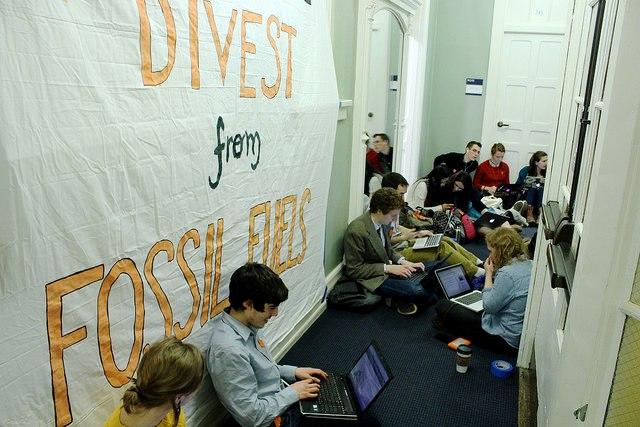

By John Powers
Climate change is accelerating. We are running out of time to stop the earth’s temperature from rising beyond 2 degrees Celsius, at which point climate scientists forecast irreversible global devastation.
As governments move ever-so-slowly to determine viable policy solutions to climate change, there is a rapidly growing movement elevating public awareness of the importance of curtailing investments in fossil fuel companies and re-investing in clean energy solutions. This movement is called “Divest-Invest."
Ellen Dorsey, executive director of the Wallace Global Fund, laid out the first Divest-Invest campaign during a small meeting at the Alliance for Sustainable Colorado in Denver in 2010. She applied the Sullivan Principles, which advocated boycotting investments in South Africa to end apartheid, to coal.
By September, 2014, Divest-Invest had expanded to all fossil fuels, and has since enlisted collective divestment pledges of over $50 billion in assets from more than 800 endowments, including the Guardian Media Group, the World Council of Churches and the Rockefeller Brothers Fund (RBF). Although RBF’s assets were derived from Standard Oil, Valerie Rockefeller Wayne (a great-great-granddaughter of oil magnate John D. Rockefeller Sr.) told the Washington Post that “there is a moral imperative to preserve a healthy planet.”
So far 21 U.S. colleges and universities with $4 billion in endowment assets, led by the University of Dayton and Syracuse University, have committed to divesting from key fossil fuel companies. Stanford University has divested its endowment of coal producers. Popularized by Bill McKibben, 350.org and many others, the Divest-Invest campaign has grown virally into what Cambridge University calls “the fastest-growing divestment movement in history.”
Divestment is not about dismantling the fossil fuel industry; it’s about the critical urgency of energy companies changing their business models to transition away from combusting fossil fuels and developing environmentally benign energy generation. When the “carbon bubble” bursts, the value of companies invested in fossil fuels will fall.
There are Divest-Invest opportunities for any individual, organization or institution with a savings account or an endowment. If a university has a mission to advance knowledge and learning, then it has a fiduciary responsibility to align its investments with that mission. As another example, if a foundation is making investments in companies, which are fueling the problems their grantees are endeavoring to solve, those investments are counter-productive.
Recently, the Church of England divested over $18 million and Prince Charles is reportedly on the brink of divesting, as well. In March, the United Nations lent its “moral authority” to the movement. “We support divestment as it sends a signal to companies, especially coal companies, that the age of ‘burn what you like, when you like’ cannot continue,” said Nick Nuttall, a spokesman for the UN Framework Convention on Climate Change (UNFCCC).
Instead of looking backward, we need to look forward. So, what can we re-invest in? Many of the investments which are good for the climate also benefit the triple bottom line – people, planet, profits. In the energy sector, for example, viable clean alternatives to fossil fuels include wind power and solar energy. Costs have dropped dramatically so that these options are competitive with natural gas. Now that Tesla and other companies are improving battery storage, we’re going to see even more rapid growth and creative applications of these infinite sources of clean energy.
We can re-invest in technologies that improve efficiency and reduce waste, such as low-flow toilets and drip irrigation. Or buildings that achieve the U.S. Green Building Council’s LEED certification because they’re designed and constructed to maximize efficiency, source materials locally, and benefit the health and productivity of its inhabitants. In the transportation sector, we can re-invest in high-performance, low-emission, energy-efficient ways to move passengers and freight. Sustainable food production is also a good investment – localized, organic farming and processing operations.
All of these issues and more will be at the forefront this week at the Alliance for Sustainable Colorado’s first-ever Divest and Sustainable Investment Convergence. Divest-Invest leaders and experts will be arriving from around the world, with events coordinated by the Intentional Endowment Network, Divest-Invest Philanthropy, Health Care without Harm, GreenFaith, As You Sow and the Divest-Invest Coordinating Committee. We intend for these events to accelerate progress locally and contribute to the momentum of the movement nationally.
The Divest-Invest movement aligns the practical financial reasons to protect one’s investments from the declining fossil fuel sector, with the practical and urgent moral reasons to protect the integrity of ecological systems that enable all of life. Join us.
Image credit: Flickr/Swarthmore MJ
John Powers is the founder of the Alliance for Sustainable Colorado.
How Starting a Charity Changed My Business (and My Life)


By Chris Thornham
For me and my brother, helping families in need has been a lifelong endeavor. When we started FLO Cycling, it seemed only natural to add a charitable component to our business. We decided to create our own program called Bike for a Kid.
The idea behind the program is simple: When we sell a set of our more expensive bike wheels, the extra money our customer spent is allocated toward the purchase of a bike and helmet for a child in need. Since launching Bike for a Kid, we’ve learned that even the simplest concepts can have dramatic impacts.
This act of charity has created benefits for our business that span beyond tax breaks and positive publicity. There have been far more rewarding bonuses worth noting.
Smiles: The ultimate reward
Remember the feeling of getting your first bike? Many families in the United States don’t have enough money to afford food for their kids, let alone toys or sporting equipment. Watching a child realize that he now has his very own bike is an incredibly special moment.
Since launching Bike for a Kid, I’ve been able to work with a lot of great organizations that go even further to help underprivileged children. In some cases, the only time these kids eat a square meal is when they’re at school. One organization in particular, Three Square, strives to remedy this by stuffing kids’ backpacks full of food when they leave school for the weekend. You should see how these kids react to having enough food to last until Monday.
The smiles that I see when doing charitable work are more rewarding than any business transaction I’ve ever been a part of.
Revealing the good in people
The day-to-day grind of running a business makes it easy to forget how much good there is in the world. It often seems like people are only out to serve themselves. Getting stuck in this cynical mindset can hinder your ability to run a successful company and impact the way you communicate with customers. Once you become involved with a charity, you’ll gravitate toward a healthier mindset of seeing the best in people.
Bike for a Kid has shown us how contagious the spirit of giving can be. Customers get excited about spending more money when they know it goes toward a good cause. Local athletes have volunteered their time to help run our company’s events. Competing businesses have offered their time and support as well.
Competitors stop being competitors
I’m sure that you’re fully aware of how cutthroat the world of business can be. Involving your company in a charity program can change the entire tone of your industry. It’s been amazing to see how eager other businesses are to work alongside my company when they see the charitable work we do.
Charity can transform competition into collaboration. I have always believed that it’s better to support your competitors than to try to destroy them, and I am happy to see that many companies in my industry feel the same way.
How to Get Involved
Ready to give back? Here are three tips to help you launch a charity initiative of your own:
1. Follow a passion.
Adding a charitable organization to your full plate will only make you busier. If you aren’t passionate about the program, don’t start it. You’ll feel overworked, and you won’t put enough energy into it. This will give the impression that you launched a charity for all the wrong reasons.
2. Partner up.
Linking with existing organizations will make things much easier. As I mentioned earlier, once word gets out that you’ve launched a charitable initiative, businesses will flock to associate themselves with you and lend a helping hand.
3. Start small.
Fundraising for any cause is no easy task. You probably learned this when launching your business. It would be great if you could raise millions and millions of dollars overnight to help those in need, but the process is generally much slower than that.
Perhaps you can begin your road to charity by volunteering at your local Boys & Girls Club. Starting small could lead you to bigger ideas. Just keep reminding yourself that every little bit helps — the fact that you’re being of any service is what’s important.
In the end, getting involved in charity has benefits that reach far and wide. Not only are you helping those in need, but you’re also helping your business, getting to see the best in others, and ultimately feeling better about your life and the world as a whole.
But remember: It’s not always about changing the whole world. Sometimes, it’s just about making one kid smile.
Image credit: FLO Cycling
Chris Thornham is a co-founder of FLO Cycling, which engineers aerodynamic cycling wheels. The company uses computational fluid dynamics software to develop its wheels and verifies its results in a wind tunnel. Less than three years after launching, the company has sold 10,000 wheels to customers in 51 countries. Chris enjoys learning, triathlon training, skiing, hiking with his dog, and spending time with family.
6 Factors Changing Where Your Produce is Grown
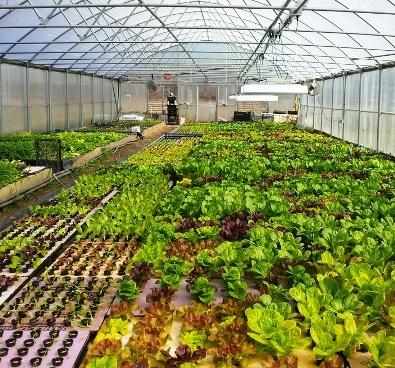

By Kerry Kilpatrick
A rooftop farm in the middle of New York City, growing a million pounds of produce every year, would have been unimaginable a short time ago. It is now a reality.
There are some amazing trends emerging in a variety of farming operations that will affect where and when your produce is grown. Six key forces are driving those trends, and they are creating amazing business opportunities.
Here’s a brief description of the forces that are at work:
1. Health benefits
There is a big demand for organic produce that is pesticide and chemical free. The health benefits of clean, fresh produce on the human body are well documented and extremely compelling. A hospital in Michigan recognized those benefits and created an abundant source of fresh, organic vegetables and herbs in an on-site “farm” for their patients. An article announcing the new greenhouse had this to say:
“Henry Ford Hospital in West Bloomfield Township has built a $1 million greenhouse on its 160-acre campus to grow fresh fruits, vegetables and herbs for use in the hospital year-around, and has hired a 'resident farmer' to tend it.”
2. Energy savings
Growing produce in South America and trucking it to locations in North America requires a huge amount of energy. The United States Department of Agriculture (USDA) is helping to fund improvements in agricultural energy efficiency, as well as conversions to renewable energy systems, that will make regional growing more affordable.
Cozy Acres Greenhouse in North Yarmouth, Maine, utilized the USDA program to create its signature line of produce -- described as “Zero Emission” products. Cozy Acres' produce is grown in a greenhouse that uses electricity created from the sun and heat from a geothermal system. When it distributes its products to local restaurants and farmer’s markets, their carbon footprint is negligible.
3. Advanced technology
Year-round grow operations were unheard of in northern climates due to the short daylight of winter. The use of supplemental grow lights tended to be expensive and limited profit potential. New LED grow lights have dramatically reduced the energy demands of a greenhouse operation and make year-round operations more profitable.
One Michigan grower recently received a sizable weekly contract for produce simply because their lettuce was grown locally and year-round. Restaurants, catering to the demands of their customers, want to offer more locally-grown produce. Advances in vertical farming and hydroponics are now taking the weather variable out of farming and making predictable harvests a reality
4. Desire for locally grown
Locally-grown food was the No. 1 choice on the top 10 list of menu trends for 2014, according to the National Restaurant Association. The Chipotle restaurant chain, in recognizing this trend, continues to provide more locally grown, organic food for use in its food operations. This trend is giving local growers a huge advantage.5. Farm-to-table
The farm-to-table trend can be summed up in one word – FRESH! Picking an ear of corn when it’s at peak ripeness and immediately roasting it on a grill and savoring its unique flavors is an unknown experience for most urban shoppers. Their corn was probably picked many days prior to purchase, and the peak flavor is inevitably lost. Now, even in the middle of New York City, fresh, farm-to-table food products are available.
Farm-to-table is a growing trend with no end in sight. Food that is picked, processed and served all in the same area is a trend that is economical and profitable for farmers as well as farmers markets and restaurants.
6. Unique farm locations
In the past, the open spaces needed for farming were nonexistent near the city. Local growing operations were not possible, and produce needed to be trucked in to local markets.
With the changes in our economy, many towns have large former industrial spaces or warehouses sitting empty. Technology now makes turning that space into a farm possible with a minimum of site changes. St. Paul, Minnesota, converted a former brewery into an organic farm capable of turning out tons of produce per year.
--
There are some amazing trends emerging that will affect where and when your produce is grown.
Led by changes in technology and a growing awareness of sustainability, the forces listed above will drive trends that will affect your food choices and will influence your produce buying habits in the very near future. The trends have also created a new word that best sums up the movement -- locavore!
Image Credit: Mud Lake Farms
Kerry Kilpatrick is the Social Media Director for The Energy Alliance Group of Michigan. He enjoys highlighting the amazing stories that result when businesses implement energy saving strategies and embrace renewable energy innovations. An energy philosophy best summed up by the phrase “reduce then produce."
Nature’s Cranky Banker Has Foreclosure on Her Mind


By Ian Edwards
Injecting sustainability with some imagination, envision for just a moment a power lunch with Janet Yellen, chair of the U.S. Federal Reserve, and Mother Nature, chair of our natural capital reserve – a bank of a different sort.
Between courses, conversation might start with how the first interest rate hikes since 2006, expected from the Fed as early as this fall, might affect corporate debt holdings. It might then shift to humanity’s continuing delinquency in repaying its debt to the environment.
“I’m still waiting for the tell-tales like employment and spending that prove to me that the economy is finally healthy after the crisis,” says an imaginary Yellen over a bite of arugula.
“I only wish changes at Nature Bank warranted a scintilla of the attention you get,” says Nature Personified, sipping a fair trade coffee. “I’ve been way too easy on the deadbeat borrowers.”
Creative license aside, the state of our investment in sustainability would be far more evolved if industry was as attuned to changes in lending policy from our finite natural resources as it is in wondering aloud when the Fed will put a crimp in cheap debt. The fact that we don’t have a banking-like relationship with nature is a missing link in the sustainability debate.
In 2012, Corporate Eco Forum and the Nature Conservancy published a tally: Nature produces $72 trillion worth of goods and services for the global economy every year through its water, soils, minerals and other natural assets. The report, called Valuing Natural Capital, cites the 2012 KPMG estimate that if companies had to pay for their own environmental bills, they would lose 41 cents for every $1 in earnings. By this math, for illustration, tech giant Apple would pay nature $16.2 billion based on its 2014 net income, up from $15.2 billion a year earlier.
More recently, the World Wildlife Fund, in its April 2015 report Reviving the Oceans Economy, valued the oceans at $24 trillion.
“The oceans are our ‘natural capital’ — a global savings account from which we keep making only withdrawals,” explains Brad Ack, senior vice president for oceans at WWF “To continue this pattern leads to one place: bankruptcy. It is time for significant reinvestment and protection of this global commons.”
Regardless of whether you believe the accounting methodology or not, the numbers are big – perhaps, too big to fail. Equate sustainability with the global financial crisis, and perhaps we can innovate more effective responses to issues like climate change, biodiversity loss and resource scarcity. How might we recast sustainability as a global bailout?
If nature is like a bank, then we are borrowing without understanding the terms or planning a repayment schedule. Extend the metaphor and, in many ways, the impacts associated with our global sustainability challenge might be explained as penalties for default, or even foreclosure.
Business borrows every day, negotiating terms and payback and writing down the interest paid on that debt as a cost of doing business. How is the debt to nature different? You wouldn’t go into a relationship with a banker without an expectation of repaying a loan. You would expect penalties if you failed to live up to the contract.
Think of the impacts of sustainability, like extreme weather and rising tides, in terms of late fees. Might Super Storm Sandy have been a debt collector or repo man? By returning rent, annuities or dividends to nature, we might avoid default.
Just how we might calculate this ROI is a creative process that has yet to take place.
Reinvestment
We might look at reforestation as a way that timber companies have replenished stocks. Whether that is a form of agriculture or repayment is a matter of debate. The point is that reforestation is a cost of doing business for long-term resource maintenance.
Companies that extract non-renewable resources are, of course, not going to put them back in a kind of one-for-one model. In this case, perhaps there is a proxy: value-for-value. If a company extracts a non-renewable resource, what substitute reinvestment in nature works? Or, can a company in a degenerative (nature-busting) industry use what it would pay in its debt to nature to transition to a regenerative (nature-building) model?
Offsets
Carbon offsets offer an interesting market-based model. A payment to nature might be based on an offset formula that trades carbon-boosting behavior for an investment in projects that scrub carbon from the environment. For every $1 of degradation of nature, a $1 of restoration goes back.
Since we’re in such a nature bank deficit, maybe we slap on a payback premium (say, $1.41, to echo KPGM’s estimate, for every $1 of extraction) for the near term.
Surcharges
A price on carbon will work toward scrubbing nature of greenhouse gases – and require polluters to pay their share of negative externalities. Perhaps there is a way to extend this to a dividend or annuity paid to nature’s bank.
A revenues royalty might also be model. The organization 1 Percent for the Planet collects 1 percent of revenues from participating companies to remit funds to philanthropic causes. It’s not a big leap to see how a surcharge on corporate revenues could be used to pay nature some return for the privilege of doing business. The idea that nature extracts value out of business provides an interesting reversal of fortune – or conjures images of a shakedown from angry, impatient, threatening creditors.
Then, we need to figure out who sets the rules, handles the remittances, authenticates claims, ensures compliance, redistributes the funds, penalizes the deadbeats and forecloses. Suddenly, we’re talking about something that sounds exactly like a bank. Worthy of a debate in sustainability is whether we have been discharged from our obligation to pay nature anything and what are the consequences, as happens in regular business transactions, if we haven’t.
In the first quarter of 2015, 26 publicly-traded companies like RadioShack filed for bankruptcy, putting $34 billion in assets in question. These are companies that defaulted, unable to repay creditors like their banks the full value of what they owe. While declining oil prices are a factor, a key issue for weak companies is the stricter lending environment. Banks are in a position to expect more from their borrowers. There is no such lending environment for natural capital. If there were, maybe we would get to keep our house.
Image credit: Kevin Dooley/ Flickr
Ian Edwards is a sustainability consultant based in New York City. His previous posts include Sustainability: What’s the End Game? and Earth, Inc. in Turnaround
Ohio Wind Farm Proves the Case for Smart Renewable Energy Policy
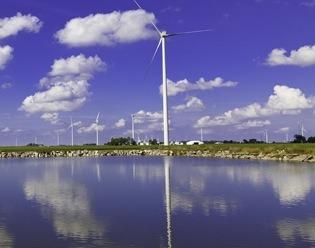

Editor's note: This post originally appeared on the IEEFA blog.
By Sandy Buchanan
Ohio, it’s fair to say, isn’t known as a leader in the transition to renewable energy.
In fact, it attracted some well-earned infamy last year when it became the first state in the country to “freeze” a requirement that utilities purchase a certain amount of their energy from renewable sources like wind and solar. That regressive move by lawmakers signaled that Ohio’s ruling politicians don’t put much stock, or don’t want to put much stock, in the new-energy economy.
And yet, in northwest Ohio’s Van Wert County sits Blue Creek Wind Farm, a 300-megawatt set of turbines that repudiates such resistance.
Although a great deal has been said about the many jobs created by renewable energy, little has been said about its effect on electricity prices. This is partly because information about “power purchase agreements” between private parties — like energy generation facilities and their customers — is usually kept confidential, which serves to keep the public in the dark about the costs of different forms of energy. But because several public entities are customers of Blue Creek, data on the price of power from the plant is available, and it tells a story worth sharing.
Spanish renewable-energy giant Iberdrola started developing Blue Creek in 2009, and the wind farm began producing electricity in 2012. The company started the $600 million project at a time when virtually all development in Ohio had ground to a halt due to the Great Recession. Iberdrola was able to finance the project from its own balance sheet and then to take advantage of a federal stimulus program created to spur investment in renewable energy (the company qualified for a $172 million federal grant after the project was completed).
Blue Creek signed long-term purchase power agreements with three major customers: FirstEnergy, for 100 megawatts over 20 years; American Municipal Power (AMP), for 52.2 megawatts over 10 years; and Ohio State University, for 50 megawatts over 20 years. FirstEnergy’s contract is not made public, but IEEFA has obtained information about the AMP contracts from municipalities that purchase power from AMP, and Ohio State has released details of its deal with Blue Creek Wind.
The data: Wind-powered energy saves money
Data from AMP and Ohio State shows that wind power in Ohio is a good deal for its customers, and that its price is competitive with, and in some cases significantly cheaper than, other sources of power.
Ohio State’s levelized price — essentially an average price — for its 20-year Blue Creek deal is $54 per megawatt-hour. The wind farm provides 25 percent of the power needed to run the university, which with 58,000 students and 570 buildings is among the largest in the country.
AMP’s deal with Blue Creek set a levelized cost of electricity of $45 per megawatt-hour over its shorter 10-year deal. The rate started at $35 per megawatt-hour, and will ratchet up gradually, by $2 per megawatt-hour each year of the agreement.
How do we know that Blue Creek’s wind-powered energy stacks up so well on price? In part because Ohio State revealed this past February that is had saved $4 million to date on its electric bills through its deal with Blue Creek. And we can see in the data that municipalities save money by getting their electricity from Blue Creek.
Here’s a chart, for instance, that shows the prices residents of Galion, Ohio, a member of AMP, paid for electricity from various sources from May to September 2014. It’s a revealing snapshot and a compelling comparison, because Galion got its power from so many different sources. Blue Creek’s power, which cost the town about $35 per megawatt-hour in 2014, was Galion’s least expensive source aside from what it paid for hydropower from Niagara Falls. Power from Blue Creek cost less than the average market price, less than electricity from AMP’s Fremont natural gas plant, and less than the power from the controversial Prairie State coal plant (which, unfortunately for Galion, provides the lion’s share of the town’s electricity).
An increasingly important part of U.S. energy markets
The comparisons aren’t perfect, of course, because wind energy differs from fossil-fuel plants in that its operations are intermittent — the turbines generate energy only when the wind is blowing. So, taken on its own, wind power is not a full-time substitute for fossil fuels. But wherever wind has begun to take hold, it is becoming an increasingly important share of the market. In Texas, for example, wind energy is dispatched across the electricity grid ahead of coal-fired generation whenever possible because the price is so much lower.
Wind farms do need to be counted on for a certain amount of power in order to make the deals work. This is taken into account when the projects are planned and as developers estimate “capacity factor,” which is the amount of time a plant will be operational. Blue Creek reports that it has met its average capacity factor target of 35 percent, which means it is able to dispatch the amount of electricity that customers were counting on.
Critics of wind-power deals often cite federal subsidies as proof that the projects couldn’t make it on their own. But there isn’t a form of energy in the U.S. that hasn’t received major federal subsidies. The Prairie State plant was built on the back of $1 billion in Build America Bonds, oil companies receive huge tax breaks, and the nuclear industry wouldn’t exist if it weren’t for the massive federal insurance program created under the Price-Anderson Act.
It comes down to smart decision-making about where to best invest public dollars, taking into account the social, environmental and economic benefits of any such investment. If you ask me, Blue Creek Wind Farm is a textbook case for why renewable energy deserves a public-policy tailwind.
Image credits: 1) Iberdrola Renewables 2) IEEFA
Sandy Buchanan is IEEFA’s executive director.
Humanitarian Organizations Struggle to Keep Pace with Climate Change


By Roy Brooke
The number of people in crisis is growing. Globally, 52 million people received international humanitarian assistance in 2014, according to the United Nations, and millions more sought help from communities and governments. To add perspective, 52 million is nearing the number that live in the United Kingdom and more than live in Spain. The number is expected to grow by another 5 million this year.
Climate change is a big contributor to this trend, as it increases risks and vulnerabilities related to natural hazards such as drought, floods and storms, and impacts peoples’ livelihoods, health and food systems. Climate change can also erode the economic base of societies through slower changes such as desertification and interact with other risks; for example, it can increase conflict over scarce resources.
The global humanitarian community is feeling the strain. The amount of money they seek annually is up 300 percent over 10 years; the number of people they try to help has doubled over that period, and the crises they respond to are getting longer. These trends will increasingly test the capacity of the humanitarian system to respond. Although climate change is, of course, not the only factor in these trends, its role as a driver and multiplier of risk will only grow. By 2030 India and Pakistan alone are projected to be home to 180 million poor people at risk to climate change impacts.
Increasingly, disasters such as floods, storms and droughts do not represent an acute, unpredictable “emergency,” so much as chronic human vulnerability to predictable, recurring risks. So, rushing in with palliative humanitarian assistance to climate-related disasters may not be the most appropriate or helpful response. For example, in Fiji in 2009, heavy rain led to severe flooding in the city of Nadi. After the flooding, homes were rebuilt quickly in their original locations so that people could get on with their lives; in other words, there was a “traditional” humanitarian response. However, locals had noted that heavy rain and flooding had become increasingly common in the region. This means that a traditional response with no attempt to increase their resilience to flood risks, provide alternative places to live or incorporate adaptation measures, may have actually rebuilt risk and set the stage for more disasters, with corresponding human and institutional burdens.
Responses like this one are common because, overwhelmingly, that is what the humanitarian system is set up to do: respond to emergencies, not reduce vulnerability. Indeed, the humanitarian system remains very separate from the development community, which is understood to deal with “long-term” issues, even though the distinction is increasingly irrelevant or blurry.
To illustrate, less than 1 percent of humanitarian funding is spent on prevention and preparedness measures. Assistance itself is normally provided in the form of tents, food and water, even when crisis is the norm. This means that, even though a disaster may go on for months, years or recur often, victims are often given only such assistance as will get them to the next disaster, not programmatic support that moves them out of harm’s way.
Donors can contribute to the challenge. For example, donors spent substantial funds on famine relief in Niger in 2005 during a drought situation, but few wanted to also spend money on a Senegalese initiative to build a ‘green wall’ against the encroaching Sahara Desert that could have helped to prevent future famines.
Increasingly, leaders in the humanitarian community recognize that a shift must be made toward an approach that addresses the risks, shocks and stresses to which people are vulnerable rather than only fixing problems after they occur. West Africa’s flood season offers an insight into what this looks like. During 2007, floods across Africa were the worst in decades and caught humanitarians off guard. Hundreds of thousands of people were displaced in nearly 20 countries, and almost 300 people died.
The next year, the International Federation of the Red Cross (IFRC) determined to approach the situation differently and used seasonal forecasts to support flood preparedness and response. This meant that the IFRC could seek funds before the disaster, that medical supplies for waterborne diseases were prepared in advance, and that flooding was prevented in Ghana by releasing water from Burkina Faso reservoirs in advance. The result was a lower human toll and a 33 percent lower per-beneficiary cost.
This example illustrates two vital features for building resilience to climate change: the incorporation of climate risk information into humanitarian assessment, planning and response; and working across traditional humanitarian/development divide to develop contingency plans, early warning systems, partnerships and better coordination.
Building on this example, there are several measures that could help the global humanitarian system to change and adapt.
- First, there are opportunities to integrate climate risk information consistently into humanitarian operations. This is not always straightforward because climate data is usually global in scale and long-term in nature, whereas humanitarians normally work with data rooted in near-term and local risks, vulnerabilities and capacities. Humanitarian organizations must therefore assess their internal cultures, skills sets and capacities to ensure that they can use the climate risk information in planning, preparedness, early warning and response procedures. They may also need partnerships with climate risk information providers. IFRC, for example, has partnered with the International Research Institute for Climate and Society to ensure that it has the required climate tools and knowledge.
- Second, there is a need for holistic, integrated approaches across the aid community such as joint humanitarian-development community analyses of risks and of the responses that are most appropriate. This ties into the vital question of funding, as holistic approaches also entail require more effective ways of using existing, though currently disconnected, humanitarian, development and climate finance sources. For example, in Ethiopia the Productive Safety Nets Program gives predictable cash or food payments to 7.8 million chronically food insecure people. This helps beneficiaries to undertake soil and water conservation and the construction of schools and clinics, with corresponding food-security, climate resilience, health and education outcomes. The program also ensures that households have sufficient food, which allows them to make investments in other areas.
There are, of course, examples beyond West Africa and Ethiopia in which humanitarian assistance integrates climate risk information and increases resilience. One that will undoubtedly be getting more attention following the devastating April 25, 2015 earthquake is the Nepal Risk Reduction Consortium, which brings together government, development and humanitarian stakeholders to focus in a holistic way on issues such as school and hospital safety, and community based disaster risk reduction, whether the risks stem from climate change, earthquakes or any other source.
However, the challenge is that they remain just that – examples and not the norm. The issue, therefore, is to scale up individual examples into meaningful system-wide change. This will ensure that those who need assistance most continue to receive it, and that resilience to climate and other risks is increased.
Image credits: Jérémy, Flickr
Roy Brooke has held leadership positions in Canada, Europe and Africa, in fields including urban and organizational sustainability, national politics, international development, and humanitarian affairs. He worked for the United Nations based in Geneva, Switzerland, and also in Kigali Rwanda, during 2003-2011. He is now Principal of Brooke and Associates, a consulting firm that helps organizations and communities maximize social and environmental outcomes. [email protected]. Twitter: @rbrooke